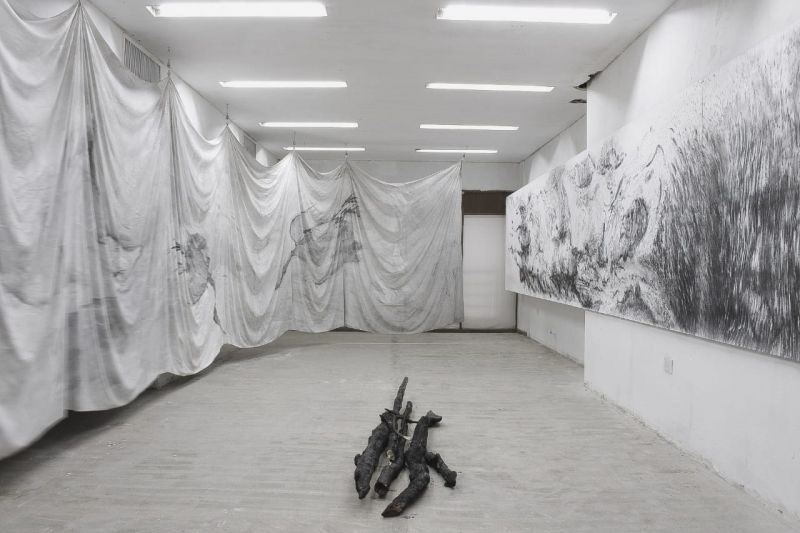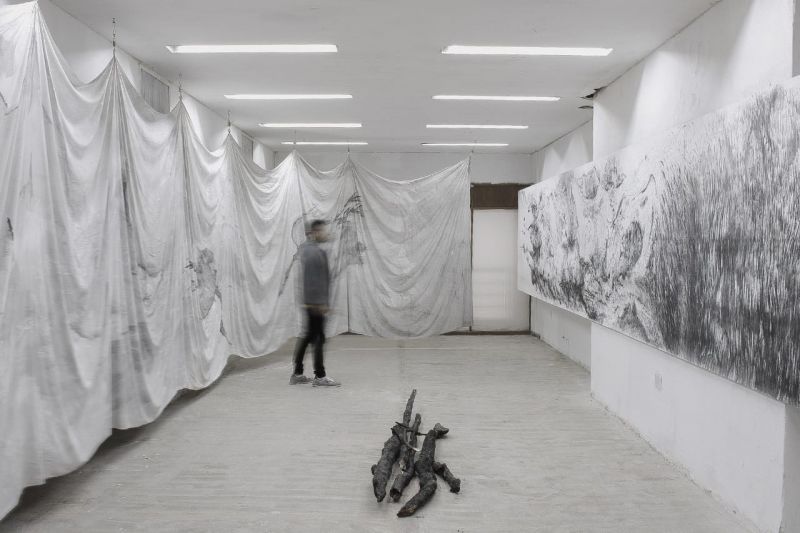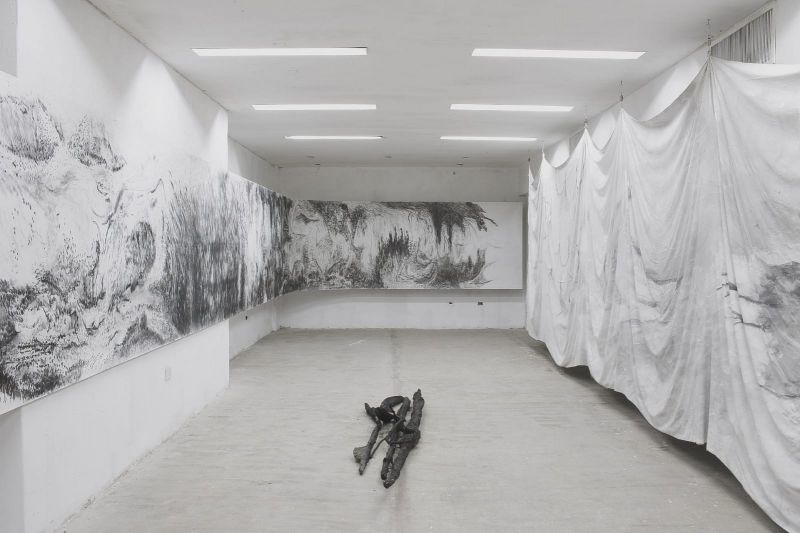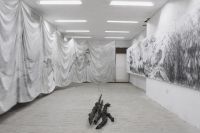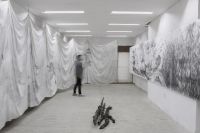Muestra | Si tendiera mi lecho en el fondo del abismo | Viginia Chouhy y Julián Astelarra
If I Were to Spread My Bed at the Abyss Bottom
Virginia Chouhy and Julián Astelarra
Curated by: Gaspar Núñez
Virginia Chouhy (Crudo, Rosario) and Julián Astelarra (Acéfala Galería, CABA)
Co-production between Crudo + Acéfala Galería
In Rosario, the 5th edition of the Microferia de Arte is celebrated. An art fair with the particularity of being the first in-person fair in the country since the beginning of the pandemic - where all participating galleries and artists will share the same physical space. Additionally, there is a theme set by the organization: "invitations." Stands must be shared by a joint proposal between two galleries, an ideal space for reunion. In this edition, Crudo Arte Contemporáneo and Acéfala Galería jointly present Virginia Chouhy and Julián Astelarra. Under these premises, the idea emerged to extend the presentation at the fair by designing a collaborative exhibition. On Friday, October 22, during the gallery night in Rosario, "If I Were to Spread My Bed at the Abyss Bottom" by Virginia Chouhy and Julián Astelarra, curated by Gaspar Nuñez, will be inaugurated.
Text
If I were to spread my bed at the bottom of the abyss
If I were to spread my bed at the bottom of the abyss, there you would be.
And if I were to ascend on the wings of the dawn, or settle
on the far side of the sea, even there you would be.
Some see in a building an eternal home; they can read the future in its walls. And there are those who see in the walls of an eternal home, a place for trophies of war. Or a museum, which from its beginnings was the same. It is said that a museum is also a mausoleum: an honored tomb made for those laurels. Many times the dream of annihilation of tombs was dreamed. That dream was shared with the disappearance of museums, their incineration. Malevich said that those sumptuous temples built to safeguard memory and the muses should be completely burned to reduce their volume and matter, of which only their ashes would be of any use. Thus, the art of an entire era is nothing more than the manufacture of trophies of war, since then, art was war itself. But certain artists today seem to be dedicated to building bridges, rather than burning them. Or already multiply them, to explode the past as a fixed and concluded point. From this ambiguous place, Virginia Chouhy and Julian Astelarra produce, between the reconstitution and the looting of the past. Where the volatile nature of a landscape disappearing before our eyes is approached in an almost archaeological way. Chouhy proposes to work with the remains of a small portion of the island, ravaged by fires a few months ago. She finds a inhospitable place that holds within it times and places that seem incompatible or irreconcilable; which is nothing other than the definition of a museum. The opposite shores speak many languages, displace the air in such a way that the senses must be re-educated, as well as memory. In Astelarra, frescoes - a painting technique of great durability and projection over time, formerly done as plaster on walls - are put in tension with the demands of today's vertiginous fragility. Here, the fresco adopts the capabilities of drywall: its autonomy, versatility, and lightness; however, the specificity of the work is heightened by its location. With the slightest movement, this fresco collapses. The artist no longer seeks to navigate the horizon of history, but rather positions himself in that liminal space, where times converge. Chouhy and Astelarra open a space where we can be as defenseless as children, because weakness is the most beautiful of values, and strength is nothing. It is known that at birth we are weak and flexible. At death, hard like an old tree. Rigidity and strength are companions of death. Ductility and vulnerability are the gestures of the freshness of being.
Gaspar Núñez
